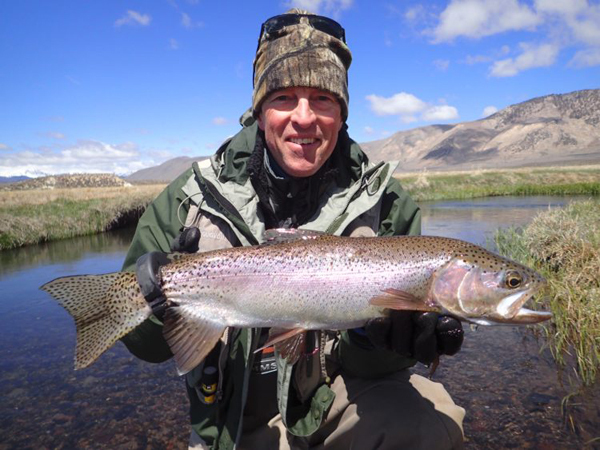
Report Date:
https://tomloe.com/Warmer weather, and waxing moon should get the cutthroat trout on the move up. Turbidity has settled down in all sections, & the roads have dried out significantly. Flows are actually lower now than most of this winter. Numbers of spring run rainbows have increased slightly in some sections; but overall it is slow. They are holding on the gravel, & tail outs on the warmer days. Overall water temps are much warmer the last few years below Hot Creeks inlets. This accelerates aquatic weed growth, and makes it tough to keep your flies clean in the sections down from big HC. Seeing some first generation BWO’s after 2pm with increased feeding from the smaller resident trout. First generation BWO’s, small dark spring caddis, & micro midges are triggering feeding activity from the resident trout on the warmer days. Attractor patterns will get you looks from what is left of the bigs. SJ worms, crystal Vanderleeches, crystal soft eggs, Assassins, and Agent Orange patterns have got us into them while nymphing below an Under-cator. Size 16/18 adult Blue Winged Olive patterns, & small parachute midges will replicate the hatches. Flashback pheasant tails, & Assassins are spot on replicas for the nymph stage of this cold water mayfly. Use #18-22 gillies, crystal chironomid pupa, broken back midges, crystal tiger, & zebra midges for nymphs that imitate midge larva or emergers. Caddis larva are present on the stream bed pumice rocks now. Olive crystal caddis imitations can be a good call for the resident fish grubbing the bottom during warmer periods. Parachute adult midges will get you looks when the fish are feeding on the “clusters” late afternoons. Look for oval depressions that appear brighter, or scraped clean on the riffles below pools. These are active spawning nests; or “redds” and you must avoid stepping on them.